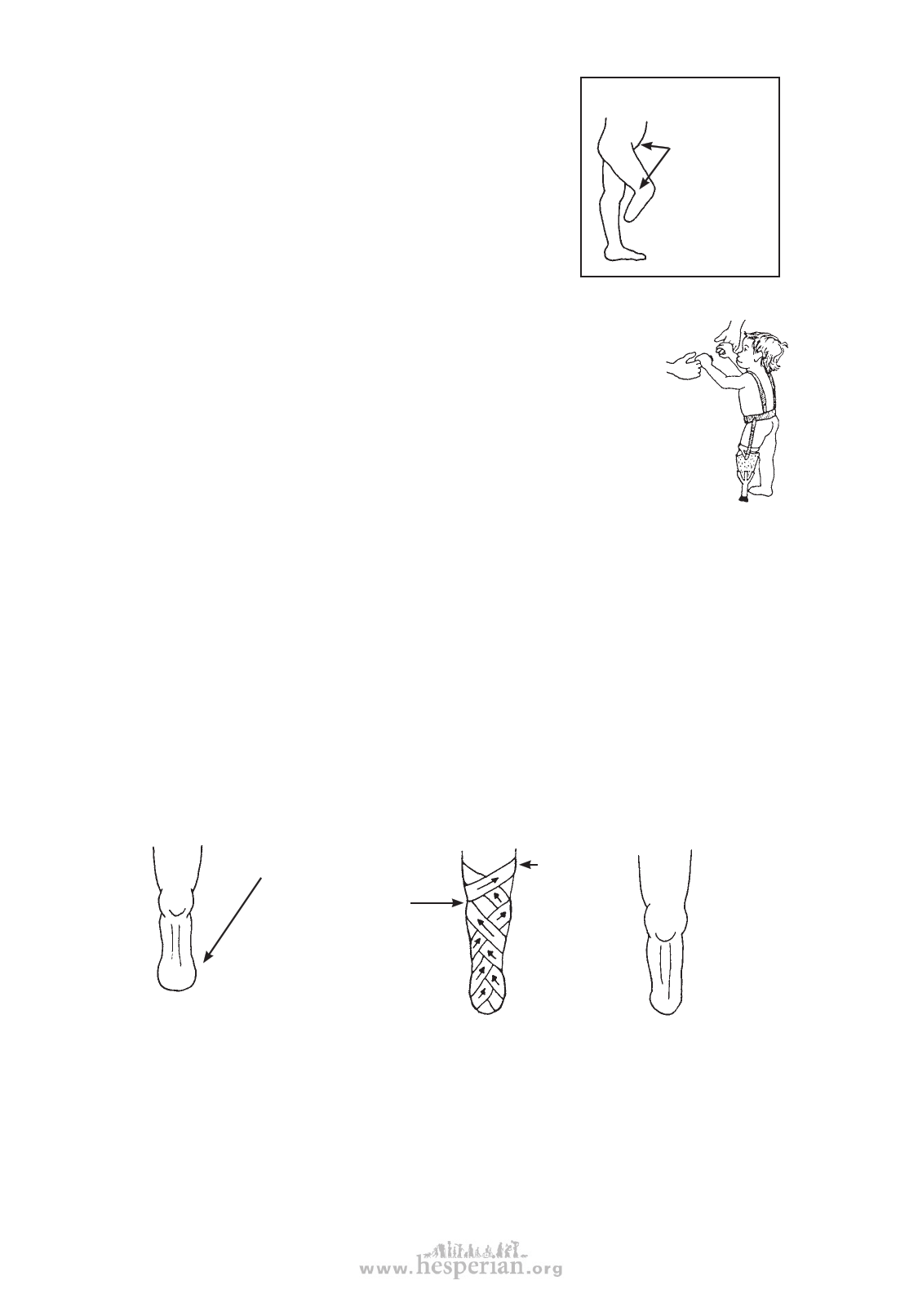
626 chapter 67
Exercises to strengthen and straighten the leg
From the time a leg has been amputated until
a limb is fitted, daily exercises are needed to
keep the hip and knee muscles strong and to avoid
contractures. If weakness and contractures
already exist, these should be corrected as much
as possible before a limb is fitted. Exercises
are discussed on p. 229 and 230.
AVOID CONTRACTURES
Contractures
here and here
need to be
straightened
before a
standard limb
can be fitted.
How soon can an artificial limb be fitted?
Children born without a foot or part of
a leg (or legs) can be fitted with an artificial
limb as early as 10 or 12 months of age.
A child whose foot has been cut off can
and should be fitted with a temporary limb as
soon as the wound has healed. However, be
very careful not to injure or put any
pressure on the new scars or end of the stump.
Note: On a very young
or fat child, it may
be difficult to fasten
the limb firmly to the
knee (the bones may
not stick out enough).
Straps to a waistband
and even over the
shoulder may be needed.
Temporary limbs—when to use them and why
Because a stump usually shrinks and changes shape in the first weeks after a limb
is fitted, it is often wise first to fit a low-cost, temporary limb. This is especially
true if the amputation is new or the stump is swollen. A better-looking, more
permanent limb can be made after 4 to 6 weeks, or when swelling is gone.
Preparing the stump
In the first weeks or months after an amputation, the stump tends to swell up.
The swelling may in time lead to a club-shaped, deformed stump, which is difficult
to fit with an artificial limb. For this reason, it is important to wrap the stump with
elastic bandage from the time the leg is cut off until a limb is fitted, or at least
until there is no more sign of swelling. Instructions for wrapping the stump are on
p. 228.
BAD
SHAPE
If the stump is swollen
or badly shaped, before
fitting a limb, wrap
it for several days
(or weeks) to reduce
swelling and improve
shape.
Wrap it to
above the
knee.
GOOD
SHAPE
NOTE: When the person is not wearing the artificial leg, he
should also wear an elastic bandage to control the stump shape.
The art of limb making
Making artificial limbs that fit and work well is both a science and an art. If possible,
try to learn from a skilled limb maker. ‘On-the-job’ training for even a few days can
make a big difference.
Disabled village Children